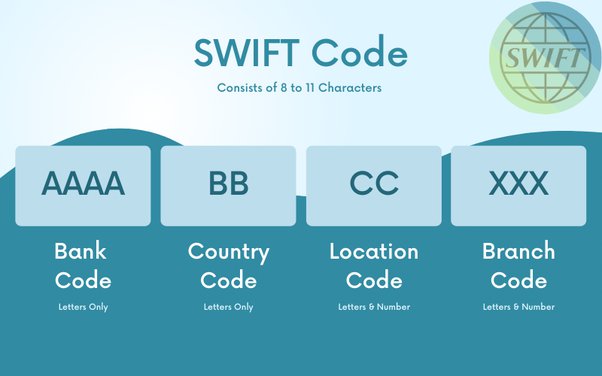SWIFT Full Form and International Trade in 2023
Introduction to SWIFT
The Society for Worldwide Interbank Financial Telecommunication, commonly known as SWIFT, is a global financial messaging network that connects banks, financial institutions, and corporations in over 200 countries. The network enables these entities to securely exchange electronic messages and financial transactions, such as international wire transfers, trade finance, and securities transactions.
SWIFT Full Form and History
SWIFT is an acronym for Society for Worldwide Interbank Financial Telecommunication. It was founded in Brussels, Belgium in 1973 by 239 banks from 15 countries. The network was created to standardize and automate the process of financial messaging and to increase the speed and efficiency of international transactions.
How SWIFT Works
SWIFT operates through a system of secure messaging channels that enable its members to exchange electronic messages and financial transactions. When a member sends a message or transaction, it is encrypted and sent through a secure messaging channel to the recipient. The recipient then decrypts the message and processes the transaction.
SWIFT Message Types
SWIFT supports various message types, each of which corresponds to a specific financial transaction or business process. Some of the most commonly used message types include:
- MT103: Used for international wire transfers
- MT202: Used for bank-to-bank transfers
- MT760: Used for standby letters of credit
- MT799: Used for bank guarantees
SWIFT Security Measures
SWIFT takes security seriously and has implemented various measures to ensure the confidentiality, integrity, and availability of its network. Some of the key security measures include:
- Strong encryption: SWIFT messages are encrypted using Advanced Encryption Standard (AES) 256-bit encryption, which is considered to be highly secure.
- Two-factor authentication: Members must use two-factor authentication, such as a password and a hardware token, to access the network.
- Compliance standards: SWIFT has implemented various compliance standards, such as the SWIFT Customer Security Programme (CSP), to ensure that members meet minimum security requirements.
Advantages of Using SWIFT There are several advantages to using SWIFT for financial messaging and transactions. Some of the key advantages include:
- Global reach: SWIFT connects over 11,000 financial institutions and corporations in over 200 countries, making it a truly global network.
- Standardization: SWIFT provides a standardized messaging format and common language for financial transactions, which helps to reduce errors and increase efficiency.
- Speed: SWIFT enables near-real-time processing of financial transactions, which can help to improve cash flow and reduce settlement risk.
- Security: SWIFT uses strong encryption and two-factor authentication to ensure the security of its network.
Disadvantages of Using SWIFT While SWIFT offers many benefits, there are also some potential drawbacks to using the network. Some of the key disadvantages include:
- Cost: SWIFT charges its members fees for using the network, which can be significant, especially for smaller banks and financial institutions.
- Complexity: The SWIFT network can be complex to navigate and requires specialized knowledge and expertise to use effectively.
- Vulnerabilities: Despite its security measures, SWIFT has been the target of cyberattacks in the past, which have resulted in financial losses for its members.
SWIFT and International Trade
SWIFT plays a critical role in facilitating international trade by providing a secure and standardized messaging system for banks, financial institutions, and corporations. The system helps to reduce the risks associated with international trade, such as fraud and payment delays.
With the help of SWIFT, financial institutions can exchange messages related to trade finance, including letters of credit, guarantees, and collections. This streamlines the entire process and enables timely processing of trade transactions.
SWIFT also offers a range of trade-related services, including Trade Services Utility (TSU), which provides a central repository for trade-related information. This helps to improve transparency, reduce risks, and enhance compliance with regulatory requirements.
SWIFT and Cybersecurity
In recent years, cybersecurity has become a major concern for financial institutions and other organizations that rely on digital systems. SWIFT has taken several measures to enhance the security of its messaging system and prevent unauthorized access or fraud.
One such measure is the Customer Security Program (CSP), which was launched in 2016. The program is designed to improve the security of the entire SWIFT ecosystem by promoting best practices in cybersecurity among its users. Under the CSP, SWIFT users are required to implement a range of security measures, such as multi-factor authentication, to protect their systems and prevent unauthorized access.
Another important initiative by SWIFT is the SWIFT Information Sharing and Analysis Centre (ISAC), which is a community of SWIFT users that shares information on cyber threats and vulnerabilities. The ISAC helps to improve the overall cybersecurity posture of the SWIFT community and enables quick responses to emerging threats.
Conclusion
SWIFT has become an essential tool for financial institutions and corporations across the globe. Its secure messaging system and standardized procedures have revolutionized the way international transactions are conducted. As SWIFT continues to evolve and adapt to changing needs, it will remain a key player in the global financial system.
